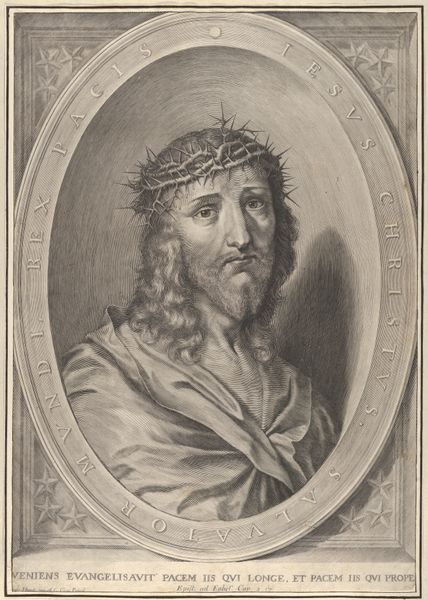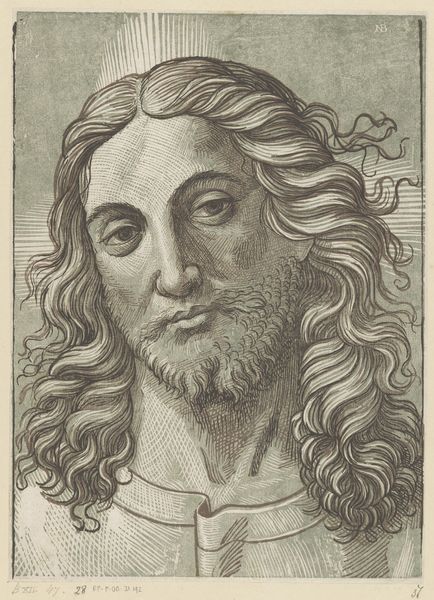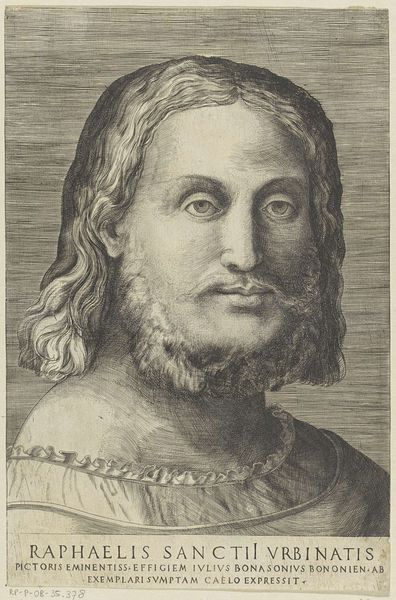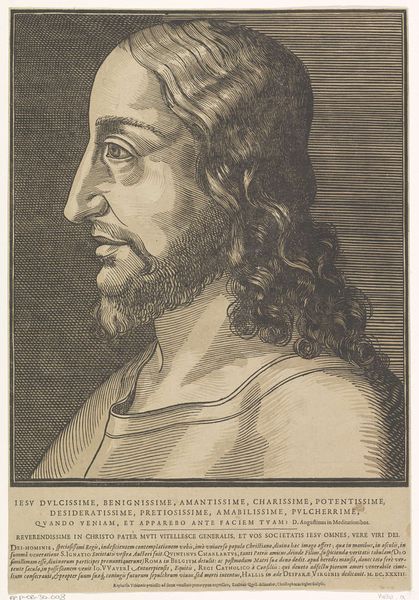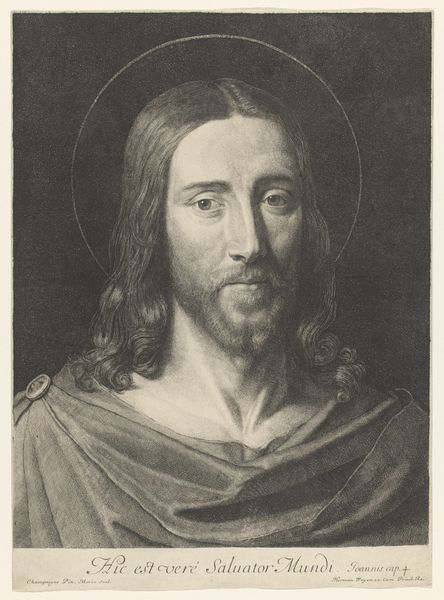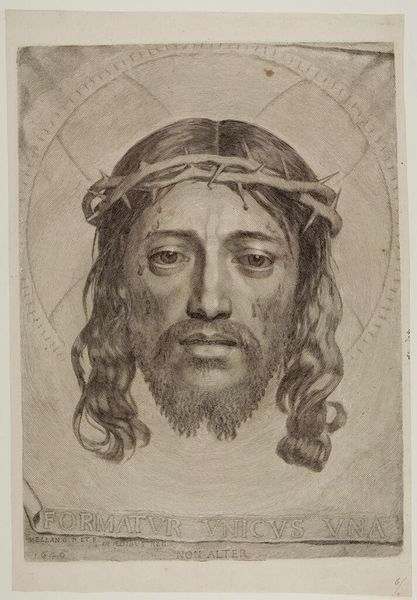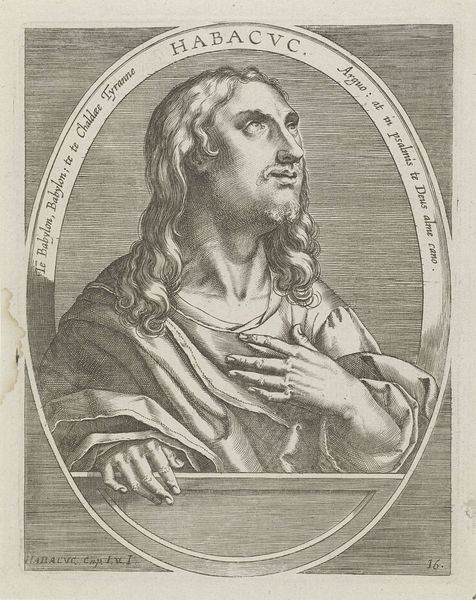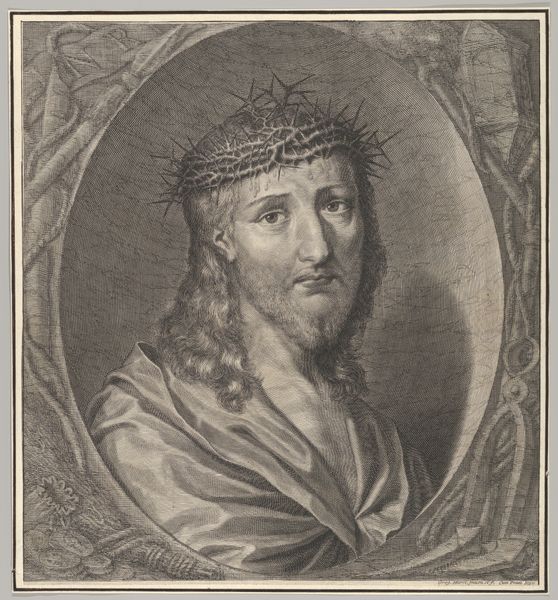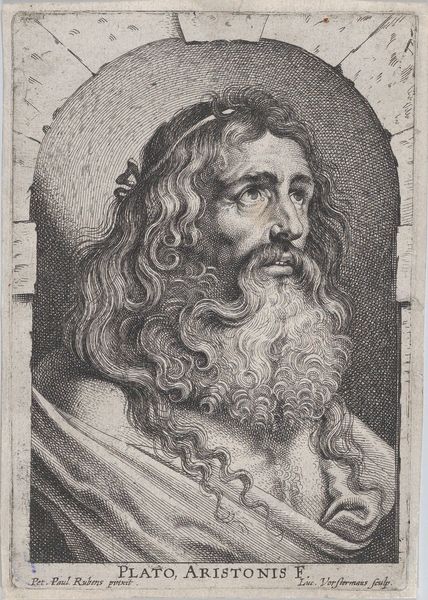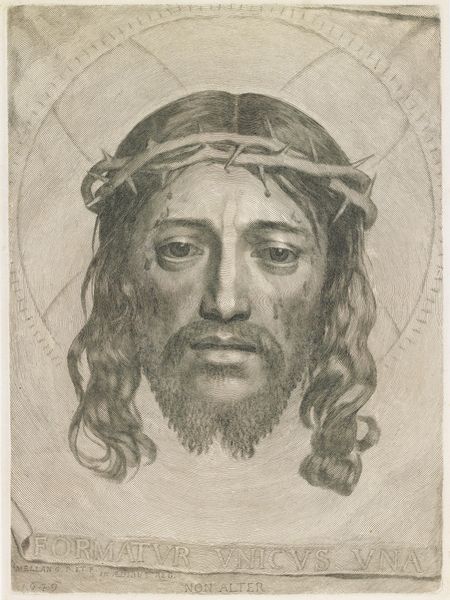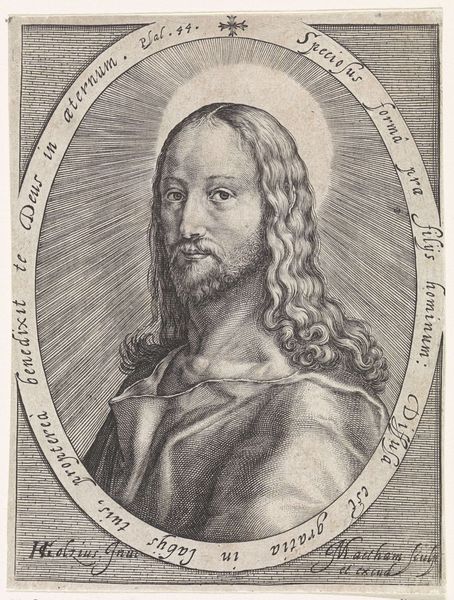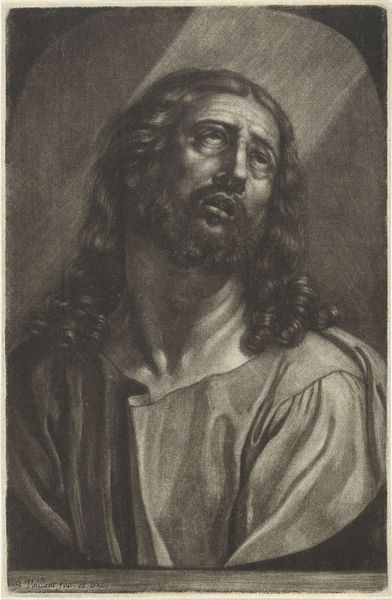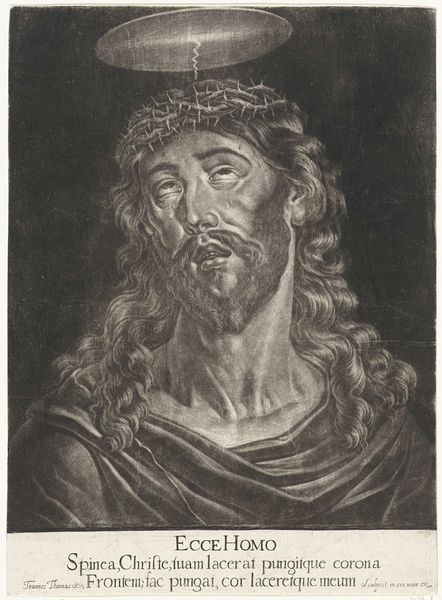
engraving
#
portrait
#
facial expression reference
#
facial expression drawing
#
baroque
#
portrait image
#
portrait reference
#
portrait head and shoulder
#
line
#
portrait drawing
#
history-painting
#
facial portrait
#
engraving
#
portrait art
#
fine art portrait
#
digital portrait
Dimensions: height 425 mm, width 279 mm
Copyright: Rijks Museum: Open Domain
Editor: This is “Portrait of Christ,” an engraving by Paulus Pontius from 1633, currently held at the Rijksmuseum. What strikes me most is its incredibly detailed linework; it almost feels photographic in its precision. What do you see in this piece, beyond the surface level? Curator: I see more than just religious iconography, I see a product of its time, enmeshed in complex social and political currents. This image of Christ, reproduced through engraving, would have circulated widely, shaping perceptions. What kind of power dynamics were at play here, influencing who could access and interpret this image? Editor: You’re right, the accessibility of engravings makes a huge difference. How does that relate to the Counter-Reformation’s use of imagery? Curator: Exactly! Think about the context: The Counter-Reformation used images to reassert the Church’s authority and appeal to emotions. How does this portrait align with, or perhaps subvert, those intentions? Is it a straightforward piece of religious propaganda, or does it hint at something more personal, more human? What's your read on his gaze, his expression? Editor: He looks contemplative, maybe even a little melancholic, which is different from a lot of triumphant depictions of Christ I've seen. Curator: Precisely! That melancholic tone might resonate with different viewers across diverse social strata, perhaps offering solace or sparking critical thought. Editor: This makes me realize how important it is to analyze even seemingly straightforward religious art through the lens of social context. Thank you. Curator: Absolutely! And by considering who created, commissioned, and consumed such images, we can gain deeper insight into the power structures of the era and the complexities of faith and identity.
Comments
No comments
Be the first to comment and join the conversation on the ultimate creative platform.

